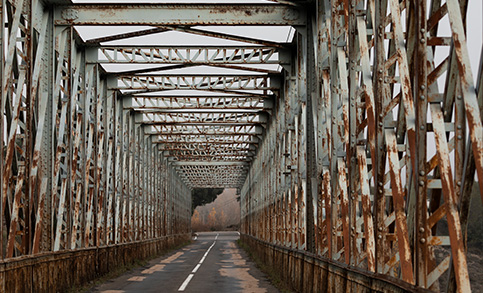Bridges are constantly exposed to moisture and salts from nearby water bodies and the air, which accelerates the process of bridge corrosion. In concrete bridges, this exposure leads to electrolytic corrosion, where moisture acts as an electrolyte, facilitating the flow of electrical currents that deteriorate the steel reinforcements within the concrete. This process significantly decreases the structural integrity and shelf life of the bridge.
Over time, unchecked bridge corrosion can lead to severe damage, resulting in costly repairs, safety hazards, or even structural failure. Implementing effective anti-corrosion measures, such as protective coatings or dehumidification systems, is crucial to prolong the lifespan of bridges and ensure their safety and durability.
Effects of Uncontrolled Humidity
Regular exposure to external environment can lead to :
- Oxidation and Corrosion
- Reduce life
- Reduce capacity of loading vehicles
- Increase life cycle cost
The Root Causes
The major cause of bridge corrosion is moisture in during construction. When moisture in air comes in contact with these ferrous metals such as iron and steel (used in bridge construction), a chemical reaction occurs and cause rust.
General Recommendations
It is generally recommended that the RH to be maintained for preventing corrosion in bridges is below 40%. The dew point to be maintained is -10C at ambient temperature.
Solution
In order to prevent corrosion of ferrous parts, the controlled space is maintained at specific relative humidity and temperature so that the products or material in the controlled space do not adsorb moisture from the surrounding.
Metalizing: One efficient option for increasing the life-cycle cost and durability is through metalizing with active metals such as Zinc, Aluminium, and their alloys. This is helpful in producing long-lasting protective coating on all concrete and steel structures.
Wire Bridge: Also known as suspension bridges these are made up from small steel wires which are bundled up to increase the strength and thereafter anchored on the ground and the top of the bridges. These bundled wires have small air gaps in between and these gaps are continuously fed by dehumidified air to avoid any type of corrosion.
In general suspension bridge/ wire have benefited from dehumidification in two areas:
- Cable anchorage
- Cable protection
At the base of the bridge where these wires are anchored with girders and concrete, the small rooms are dehumidified. At the anchorage of main cables the dehumidifier maintains a Rh of 40 % all the time. At this humidity level corrosion rate drops to negligible value.
Booster fans are required to maintain the flow of the air across the wires.
Girder Bridge: These bridges are without the wire. Moisture is adsorbed in the dehumidification sector by the fluted metal silicate desiccant synthesized rotor and is exhausted in the reactivation sector by a stream of hot air in the counter flow.
Following the reactivation process, the adsorption sector is again ready to adsorb the moisture. Positive sealing between chambers prevents mixing of process and reactivation air stream.
The relative humidity inside the chambers is thus reduced to about 35%, which is low enough to stop the cables from corroding.
Bry-Air’s recommendation is to install a Bry-Air desiccant dehumidifier as they are capable of maintaining dew point as low as -60°C regardless of ambient conditions and thus are ideal for preventing corrosion in bridges.













